Complex Medical Issues in the Lactating Parent
Medical issues in the lactating parent can often create difficulties with breastfeeding/chestfeeding and pose a challenge for the lactation care provider. Join our expert speakers in this special package focused on providing knowledge and skills to help with these particular situations. Learn more about situations such as delayed lactogenesis II and gestational diabetes, mast cell disorders, supporting clients who are facing fertility treatment, dysphoric milk ejection, inflammatory disorders and breast cancer and lactation. Our speakers include Ilana Chertok, Tamara Brand, Joy MacTavish, Alia Heise, Leah De Shay and Fedro Peccatori.
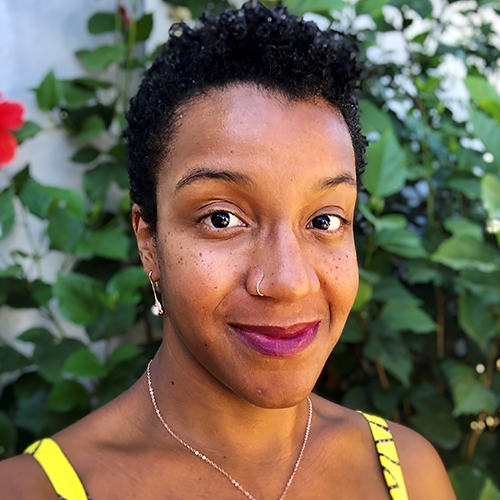

Leah De Shay studied Psychology and Speech Language Pathology in undergrad before embarking on a series of international research projects with that launched her journey to CLEC and IBCLC completion. Has worked both in patient and out patient, runs community support groups and is the current president of LACTWORLD and chief operating officer of LacBoMa. She is saving to do her bridge doctoral studies in physiology of lactation.
Objective 1: List the most common and dehabilitating symptoms for the prenatal and post partum period;
Objective 2: Describe ways these conditions can affect mammary gland development or interfere with lactogenesis stages;
Objective 3: Describe how managing the symptoms of these disorders effect the stress of recovery and breastfeeding or pumping goals, and what methods of support can be offered to help parents who have these goals overcome their steep challenges;
Breastfeeding parents who are navigating autoimmune disorders of inflammation such as lupus, and rheumatoid arthritis face unique challenges. This presentation will look at the lived experiences, limited research, and express challenges of these parents including the most common and debilitating symptoms for the prenatal and post partum periods, and ways these conditions can affect mammary gland development or interfere with lactogenesis stages. Also covered will be how managing the symptoms of these disorders affects the stress of recovery and breastfeeding or pumping goals, what methods of support can be offered and areas for future clinical improvement and advocacy.
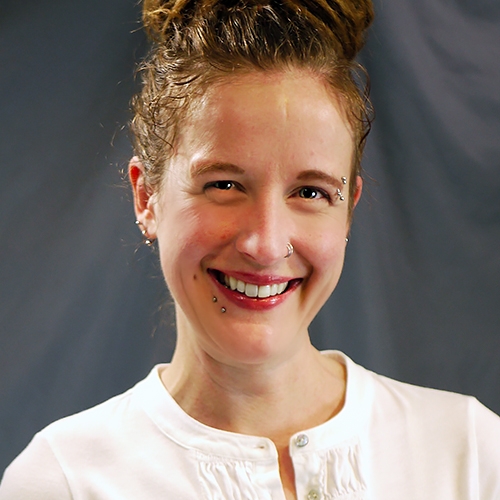

Alia Macrina Heise has worked in the field of lactation since 2004. She is considered the international authority on the topic of dysphoric milk ejection reflex (D-MER). She has been the forerunner in identifying, naming and investigating the anomaly of dysphoria with milk ejection reflex since 2007. She has spoken on the subject at many notable conferences, including GOLD, has given several interviews on the subject for both print and podcasts and has been published through her work on a case study about D-MER for The International Breastfeeding Journal. In 2017 she released the first book on the subject. Alia's passion and enthusiasm for the topic of D-MER are evident in the energy that she demonstrates in her presentations and the novelty of new information on a subject that is not yet well known or understood by many makes for an engaging and interesting presentation. Alia is not only a former sufferer of the lactation anomaly herself, she is also the webmaster of d-mer.org and she works closely with mothers around the world who are suffering with the condition in order to support them and to better understand the variance of the experience. She is also in frequent contact with other professionals in order to spread awareness and to support further research and investigation into the subject. Outside of her work with D-MER, she is also in private practice as an IBCLC in the Finger Lakes region of New York. She lives in a small rural town where she enjoys country living with her three children.
Objective 1: Explain and define what D-MER is and what it is not;
Objective 2: Distinguish how D-MER presents and it’s variances;
Objective 3: Hypothesize and illustrate the possible cause and treatment of D-MER;
Objective 4: Describe how to best help a mother with D-MER;
Dysphoric milk ejection reflex (D-MER), is not a new phenomenon. In the past, it was almost like Voldemort, the Problem That Must Not Be Named. But for over 10 years now, it has had a name and been brought into daylight. Though still not widely known or understood by many, the hypothesis of the mechanism and possible sustainable solutions are becoming better documented all the time. D-MER has been the subject of two case studies, one case series, and a qualitative research study. Two other studies as also in process at this time.
Mothers with D-MER feel, as a reflexive response with every single milk release, a wave of negative emotions ranging (depending on severity) from homesickness to hopelessness and despair, perhaps even anger and suicidal ideation. These emotions dissipate shortly after milk release and reoccur with the start of every MER, whether with breastfeeding, expressing or with spontaneous releases. Many sufferers keep the problem to themselves preferring the weaning of their baby to being incorrectly labeled as depressed or victims of abuse. Upon experiencing D-MER mothers are initially convinced the problem is physiological and not psychological, and they are correct.
As both a lactation consultant and a sufferer of D-MER, I first named and identified D-MER over 10 years ago. Now, through the case studies that have been done, collaboration with other medical and breastfeeding care providers, and the collection of information from the anecdotal reports from over 1,000 mothers, there is now a foundation of understanding of D-MER. Though the evidence base for D-MER is still mainly unestablished at this time, there are many professionals always working to bring evidenced-based information to the study of human lactation. This is exactly what the slow work and understanding of D-MER is about; the process of bringing new information into the light for further research and understanding.
In the PowerPoint presentation that I have to present, I discuss how D-MER presents, its tell-tale manifestation, and its spectrum and intensities. The presentation also explains the currently proposed mechanism of the MER anomaly, how health care providers can identify a mother it D-MER and how to help and support mothers with the condition.
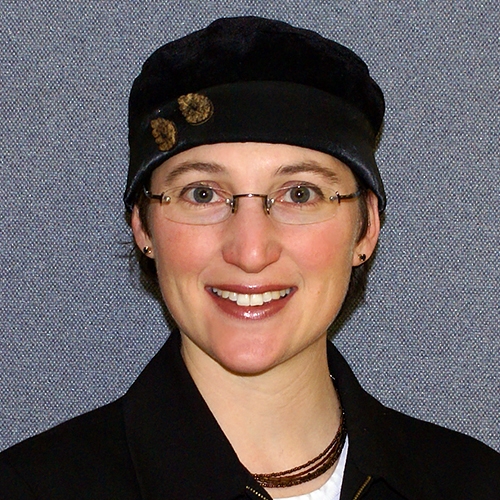

Dr. Ilana Azulay Chertok is a Professor and Associate Director of Nursing Research and Scholarship at the Ohio University, College of Health Sciences and Professions, School of Nursing. She earned her bachelor’s in international relations and nursing, master’s in nursing, doctorate (PhD) in epidemiology, and post-doctorate in nursing research. The primary focus of her research is national and global maternal-infant health, specifically lactation and breastfeeding research. She has published and presented her work in national and international journals, conferences, and other professional forums. Dr. Chertok has served as a mentor to undergraduate students, graduate students, and health professionals of various disciplines including nursing, medicine, and public health. Currently, she is the lead PI on a study examining the differences in breastfeeding and breast milk between women with and without gestational diabetes mellitus.
Objective 1: Explain the importance of breastfeeding for women with GDM;
Objective 2: List early breastfeeding challenges faced by women with GDM;
Objective 3: Use evidence-based lactation strategies to support women with GDM;
Background: Higher intensity and longer duration of breastfeeding is associated with protection against type 2 diabetes development. While exclusive breastfeeding is optimal, women with gestational diabetes mellitus (GDM) have lower exclusive breastfeeding rates than non-diabetic women. While women with GDM have expressed that they feel that their milk “comes in” late, there is limited biochemical validation of their perception and a lack of information regarding the difference in metabolite composition of colostrum which may influence the transition to lactogenesis II. Methods: Researchers conducted a prospective case-control pilot study involving the comparison of metabolite concentrations and maternal perception of milk “coming in” between postpartum women with GDM and without GDM. Results: There were lower concentrations of lactose and citrate, metabolites that indicate transition to lactogenesis II, in colostrum samples of women with GDM compared to non-diabetic women. Furthermore, a higher proportion of women with GDM reported a perceived delay in their milk “coming in.” Conclusions: Lower levels of lactose and citrate in the colostrum samples of women with GDM compared to those without GDM indicate delayed lactogenesis II with GDM which may suggest a biological mechanism associated with lower breastfeeding rates among women with GDM. Additionally, maternal perception of delayed lactogenesis II among women with GDM appears to be validated by biomarkers. The implications for practice relate to lactation support in the early postpartum period among women with GDM.
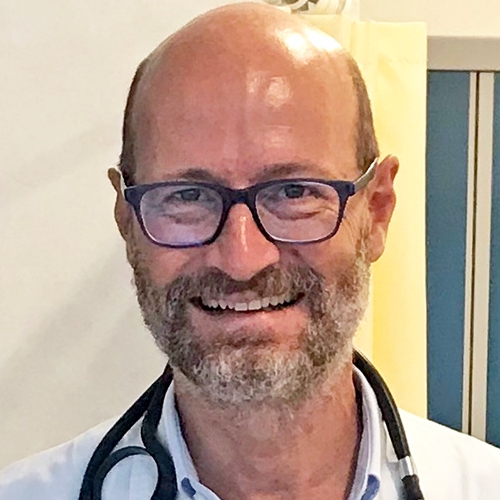

Fedro Peccatori is a medical and gynecologic oncologist whose clinical activities mainly include diagnosis and treatment of breast cancer, gynecological malignancies and tumors of young adults. He is Director of the Fertility and Procreation Unit within the Division of Gynecologic Oncology at the European Institute of Oncology, Milan, Italy.
His research projects deal with fertility preservation and counselling in young oncological patients, pregnancy associated cancers, pharmacological protection of ovarian function during chemotherapy, molecular characterization breast and gynecological malignancies.
He’s part of the ESMO task force Adolescent and Young Adult and ESMO faculty member for breast cancer. At present, he acts as Scientific Director at the European School of Oncology (ESO), where he’s in charge of organizing and supervising international courses and masterclasses on different oncological issues.
He has been interested in breastfeeding in cancer patients since 2009 and has published a number of papers on this issue.
Objective 1: Explain how breast cancer occurring during breastfeeding should be treated;
Objective 2: Demonstrate how to counsel mothers with a previous breast cancer diagnosis about breastfeeding;
Objective 3: Use the appropriate techniques of gradual weaning and breastfeeding support when one breast only can be used;
Breast cancer is the most frequent malignant tumor during reproductive age.
Around 1/10000 nursing mothers are diagnosed with breast cancer every year. In this rare and difficult situation, patients and healthcare providers should be knowledgeable about the prognostic and practical implications of such an event. Chemotherapy may pass into the milk and breastfeeding is usually contraindicated during chemotherapy. Weaning should be gradual, to avoid breast inflammation and mastitis. A thorough psychological support should be given to the nursing mother to help her into the oncological trajectory.
On the other hand, the number of young breast cancer survivors is increasing and more and more patients enquire about the possibility of subsequent pregnancies and breastfeeding. The breast treated with conservative surgery and subsequent radiation is less responsive to hormonal stimulation, with reduced glandular hyperplasia and hypertrophy. Milk production is usually decreased in the previously affected breast and surgery may affect duct integrity. Nonetheless, each breast has the capability to self regulate milk production according to the baby’s suckling habits, and many evidences support the notion that one breast is enough. Specific education programs should focus on adequate baby positioning, correct latching and reinforcement of the advantages of on demand breastfeeding. Data from our group demonstrate the feasibility of breastfeeding after breast cancer, but qualified lactation counseling to support patients and caregivers is needed.


Joy MacTavish, MA, IBCLC, RLC is an International Board Certified Lactation Consultant and certified Holistic Sleep Coach focusing on the intersections of infant feeding, sleep, and family well-being. Through her business, Sound Beginnings, she provides compassionate and evidence-based support to families in the greater Seattle area, and virtually everywhere else. She entered the perinatal field in 2007 as birth and postpartum doula, and childbirth and parenting educator. Joy holds a Master of Arts in Cultural Studies, graduate certificate in Gender, Women and Sexuality Studies, and two Bachelors degrees from the University of Washington. She enjoys combining her academic background, analytical skills, and passion for social justice into her personal and professional endeavors. Joy serves as an Advisory Committee Member and guest speaker for the GOLD Lactation Academy. When not working or learning, she can be found homeschooling, building LEGO with her children, or dreaming up her next big adventure.
Topic: Full-Term Breastfeeding/Chestfeeding: Benefits, Considerations, and Ways to Offer Support - [View Abstract]
Topic: Mindful Breastfeeding: How Lactation Professionals Can Support Calm and Connection - [View Abstract]
Topic: Sending Reports: What’s in it for IBCLCs? - [View Abstract]
Topic: Supporting Clients Facing Fertility Treatment - [View Abstract]
Topic: The Intersection Between Lactation, Sleep, and Family Well-Being - [View Abstract]
Topic: Weaning: Supporting Families Stopping Lactation and/or Ending Their Breastfeeding/Chestfeeding Relationship - [View Abstract]
Objective 1: Describe the basics of fertility treatments including IVF;
Objective 2: List at least two medications that may be used in fertility treatment. And how they may impact lactation;
Objective 3: List at least three strategies for supporting clients facing decision making about lactation while undergoing fertility treatment;
Many breastfeeding/chestfeeding parents seeking to grow their families through Assisted Reproductive Therapies (ART), including IVF will be faced with limited or conflicting information and challenging decisions. When they turn to lactation professional for support it’s important that the receive knowledgeable and compassionate care. This presentation will equip lactation professionals with an understanding of not only the various therapies, procedures, and medications, by the mental and emotional aspects that breastfeeding/chestfeeding families may experience in their fertility journey.
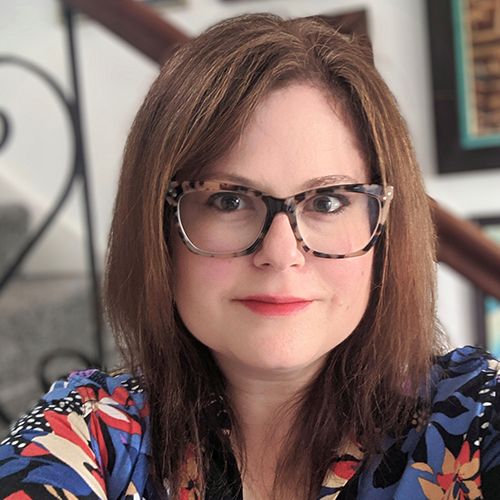

Tamara Drenttel Brand holds an MA in Near Eastern Studies from the University of Arizona and a Master’s in Public Health (MPH) from the American University of Beirut. She spent 10 years in the Middle East, where she worked as a public health practitioner, infant and maternal health consultant and an IBCLC. She has supported breastfeeding dyads from all over the world both in private practice and as a volunteer. In 2011, she founded and still actively facilitates “Mama 2 Mama Beirut Breastfeeding Support,” the largest breastfeeding peer support network in the Middle East (currently at 25k+ members). Additionally, she founded Galactablog, a professional group for lactation specialists and those aspiring-to-be (currently at 4.7k+ members) and has authored several articles for La Leche League’s monthly leader publications in both the Middle East and Ireland.
She is currently an international speaker on the topics dealing with breastfeeding in the Middle East, innovative lactation teaching strategies, working in resource-scarce settings, providing culturally sensitive lactation support, developing and implementing peer counselor training programs, mast cell disease and other related topics. Due to her own chronic health conditions, she has a special interest in educating others about mast cell disease and supporting those with chronic illnesses. She currently resides in a seaside village in Ireland with her family.
Topic: Contextualizing Breastfeeding in Lebanon - [View Abstract]
Topic: Lactation Education Outside the Box: Innovative Teaching Strategies to Engage Your Audience - [View Abstract]
Topic: Mast Cell Diseases and Lactation Care in the Post-Covid Era - [View Abstract]
Topic: Providing Culturally Sensitive Support for Breastfeeding Muslim Families - [View Abstract]
Topic: Reflections on a Breastfeeding Peer Counselor Program in Lebanon: Lessons Learned and Looking Forward - [View Abstract]
Objective 1: List 3 common symptoms of Mast Cell diseases;
Objective 2: Identify 3 common triggers for Mast Cell patients;
Objective 3: Name 2 commonly prescribed Mast Cell treatments compatible with lactation;
Objective 4: Describe 1 way you can help your client manage their parenting and/or breastfeeding expectations;
Mast Cell diseases are rare but still underdiagnosed. Even among specialists, there is a lack of consensus on terminology, diagnostic techniques and even diagnostic criteria. Clinically, mast cell diseases manifest in divergent ways. Triggers, symptoms, management and treatments differ widely from patient to patient. To date, there is no cure, just palliative management of this chronic, sometimes life-threatening condition. Because of this, there is a poor understanding of Mast Cell-related issues in the broader medical community, particularly in the realms of pregnancy, birth and lactation.
This webinar will provide participants with a general overview and understanding of the various types of Mast Cell Diseases including Mast Cell Activation Syndrome (MCAS), Mast Cell Activation Disease (MCAD) and Mastocytosis. Participants will learn how to put this knowledge into practice to provide their Mast Cell clients with specialized, empathetic, and supportive care. It will discuss how to provide patient-centered care, the importance of coordinated care and the crucial role lactation specialists play within their client’s multidisciplinary health care team. It will examine Mast Cell treatments that are compatible with lactation.
Additionally, light will shed on approaches lactation specialists can utilize to empower their clients with the tools needed to establish and maintain the breastfeeding relationship desired, including helping clients manage their parenting and breastfeeding expectations given the limitations imposed by their disease.
Accreditation
CERPs - Continuing Education Recognition Points GOLD Conferences has been designated as a Long Term Provider of CERPs by the IBLCE--Approval #CLT114-07 6 CERPs (6 L-CERPs)
If you have already participated in this program, you are not eligible to receive additional credits for viewing it again. Please send us an email to [email protected] if you have any questions.Tags / Categories
(IBCLC) Maternal, (IBCLC) Pathology, (IBCLC) Physiology and Endocrinology, Breastfeeding Complications
How much time do I have to view the presentations?
- The viewing time will be specified for each product. When you purchase multiple items in your cart, the viewing time becomes CUMULATIVE. Ex. Lecture 1= 2 weeks and Lecture Pack 2 = 4 Weeks, you will have a total of 6 weeks viewing time for ALL the presentations made in that purchase.
- Time for viewing the talks begins once you purchase the product. For Live Webinars & Symposiums, the viewing period begins from when the live event takes place. Presentations can be accessed 24/7 and can be viewed as many times as you like during the viewing period.
What are bundled lectures?
- Presentations may be available individually or via a bundled package. Bundled lectures are a set of lectures that have been put together based on a specific category or topic. Some lectures will be available in both individual and lecture form, whereas others will be available only via a bundled lecture pack.
Will there be Handouts?
- YES! Each lecture comes with a PDF handout provided by the Speaker.
Some lectures include a Q&A, what does that mean?
- During our online conferences, presentations that occur live are also followed by a short 15 minute Question & Answer Session. The Speaker addresses questions that were posted by Delegates during the presentation. We include the recording of these Q&A Sessions as a bonus for you.
How can I receive a Certificate?
- If this presentation offers a certificate, once you are done viewing the lecture or the lectures within a bundle, submit your attendance record in order to be able to download your certificate. You'll be able to see which credits are offered for the lecture by hovering over the "Credits Available" link within the "Speakers & Topics" tab.
Professionals that selected this package also viewed

|
|

|










